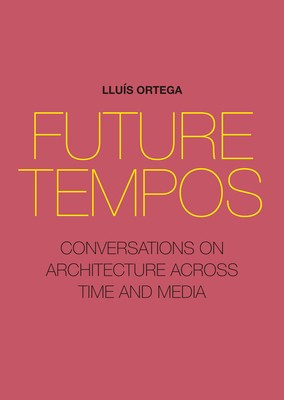
- We will send in 10–14 business days.
- Publisher: ACTAR
- ISBN-10: 1948765535
- ISBN-13: 9781948765534
- Format: 10.7 x 15.2 x 0.8 cm, minkšti viršeliai
- Language: English
- SAVE -10% with code: EXTRA
Future Tempos (e-book) (used book) | bookbook.eu
Reviews
Description
The dissemination of architectural discourse is a fundamental component in the constitution of the discipline as a cultural practice. This dissemination is not, as in other fields, an activity exclusively linked to the effort of making its contents accessible to a general or specialized public. In architecture, how the discourse becomes public is a motor for reflection and historical self-awareness. In the continuous effort to make architecture public, technology plays a fundamental role. While in pre-typographical times authors limited the publication of their work to autographed documents, with the appearance of the printing press publications became the main vehicle for disseminating the practice and associated discourses. However, in recent times, with the emergence of the digital era, these original channels have multiplied. The recent proliferation of architecture biennials and prizes, architecture exhibitions, the exhaustive and continuous publication of material online, the reshaping of traditional publishing houses specializing in architecture, and new online forums for discussing and circulating ideas all reveal a radical shift in how architecture becomes public. This new scenario is rife with opportunities, but it also poses important challenges. Traditional notions of singular authorship, canons of credibility and the legitimacy of knowledge, patterns of visibility and readability, the identification of categories of quality and originality are all topics that require reflection and, in some cases, the reformulation of traditional standards. Editorial Team: Juan Ramon Cantu, Isabel Fitzpatrick-Meyers, Marya Demetra Kanakis, Migel Santos, Aslinur Taskin With Contributions of Maite Borjabad, Art Institute of Chicago Isabel Concheiro, Transfer Penelope Dean, Flat-Out Ricardo Devesa, Actar/Urban Next Albert Ferré, CCA Fabrizio Gallanti, Fig Projects Moises Puente, Puente Editores/GG/2G Pier Paolo Tamburelli, Baukuh/San RoccoEXTRA 10 % discount with code: EXTRA
The promotion ends in 21d.05:21:02
The discount code is valid when purchasing from 10 €. Discounts do not stack.
- Publisher: ACTAR
- ISBN-10: 1948765535
- ISBN-13: 9781948765534
- Format: 10.7 x 15.2 x 0.8 cm, minkšti viršeliai
- Language: English English


Reviews